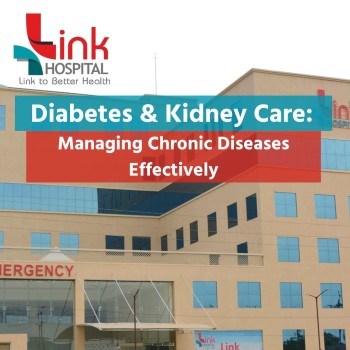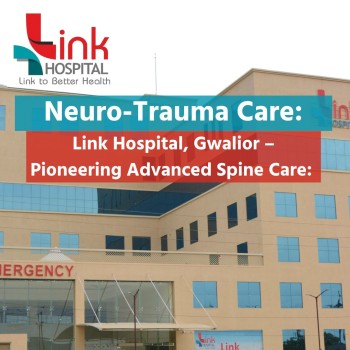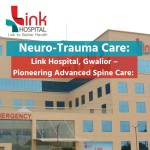Cervical Cancer: Women's reproductive health is paramount to their overall
well-being. Yet, many aspects affecting reproductive health are often shrouded
in secrecy, misinformation, and stigma. One such critical issue is cervical
cancer. This blog provides evidence-based insights into cervical Cancer development,
warning signs, diagnostic pathways, therapeutic advancements, and
post-treatment considerations.
Risk Factors & Causes
of Cervical Cancer
HPV Infection: Human papillomavirus (HPV)
infection, primarily transmitted through sexual contact, is a common precursor
to cervical cancer. While most individuals clear the virus naturally,
persistent infection can lead to cervical cell abnormalities, eventually progressing
to cancer.
Smoking: Cigarette smoke contains
carcinogens that can damage cervical cells, augmenting cancer risk. Nicotine's
impact on immune function may also facilitate HPV persistence.
Immunodeficiency: Individuals with compromised
immune systems, such as those with HIV/AIDS or autoimmune disorders, are at
heightened risk due to inadequate HPV clearance.
Reproductive Factors: Multiple pregnancies and
long-term oral contraceptive use have been associated with increased cervical
cancer risk, possibly due to hormonal influences.
Early Sexual Activity: Commencing sexual activity
before 18 years of age raises vulnerability to HPV infection, as the developing
cervix is more susceptible.
Cervical Cancer Subtypes:
Squamous Cell Carcinoma: Accounting for most cases,
this cancer arises from squamous epithelial cells lining the cervix's outer
part of the cervix.
Adenocarcinoma: Less common but more
aggressive, adenocarcinoma originates in glandular cells within the cervical
canal.
Symptoms of Cervical Cancer:
Early-stage cervical cancer may be asymptomatic,
highlighting the importance of regular screenings. Symptoms, when present,
include abnormal bleeding, vaginal discharge, pelvic pain, dyspareunia,
fatigue, weight loss, and loss of appetite.
Diagnostic Approaches:
Diagnostic strategies encompass medical history reviews,
pelvic examinations, Pap smears, HPV testing, colposcopy, and biopsies.
Advanced imaging modalities like CT, MRI, PET scans, chest X-rays, cystoscopy,
proctoscopy, and blood tests aid in staging and treatment planning.
Cervical Cancer Staging:
Staging categorizes cancer extent, guiding treatment
decisions. Stages range from localized disease confined to the cervix (Stage 1)
to metastatic spread (Stage 4).
Treatment Modalities:
Treatment encompasses surgical interventions
(cryosurgery, cone biopsy, hysterectomy), radiation therapy (external beam,
brachytherapy), chemotherapy, targeted drug therapy, and immunotherapy.
Clinical trials offer novel therapeutic avenues.
Preventive Measures:
Preventive strategies include
regular screenings, HPV vaccination, condom use, monogamy, tobacco cessation,
and lifestyle modifications.
Treatment Advances at Link
Hospital
● Minimally Invasive Surgery: Techniques such as
laparoscopy and robotic-assisted surgery have improved surgical outcomes for
cervical cancer patients, offering faster recovery times and reduced
post-operative complications.
● Targeted Therapies: Targeted drugs that
specifically target cancer cells' molecular pathways have shown promise in
treating advanced or recurrent cervical cancer, improving survival rates and
quality of life.
● Immunotherapy: Immunotherapy drugs, such as
checkpoint inhibitors, boost the immune system's ability to recognize and
attack cancer cells, leading to durable responses in some cervical cancer
patients.
● Palliative Care: Integrating palliative care
alongside cancer treatment focuses on improving patients' quality of life,
managing symptoms, and providing emotional and spiritual support throughout the
treatment journey.
● Public health initiatives,
educational campaigns, and community outreach programs play a crucial role in
raising awareness about cervical cancer, promoting preventive measures, and
encouraging regular screenings among women of all ages.
● Empowering women with
accurate information about cervical cancer, its risk factors, symptoms, and
available treatments fosters proactive healthcare-seeking behaviours and early
intervention, ultimately saving lives and reducing the burden of this disease.
Conclusion
Cervical cancer, once a leading cause of mortality, has witnessed significant declines due to screening and vaccination initiatives. Nonetheless, vigilance, early detection, and comprehensive care remain imperative. Advances in risk assessment, diagnostics, and therapeutic options herald a promising outlook for cervical cancer management and survivorship. Continued research and proactive healthcare strategies are pivotal in combating this disease effectively.
In conclusion, at Link
Hospital, we are dedicated to empowering women with knowledge and proactive
healthcare measures in the fight against cervical cancer. Through comprehensive
screening programs, advanced treatment options, and ongoing research, we strive
to ensure early detection, personalized care, and improved outcomes for every
patient.
Our commitment extends beyond treatment to holistic support,
encompassing emotional well-being, lifestyle guidance, and community education.
Together, we can continue to raise awareness, break barriers, and inspire hope
for a future where cervical cancer is preventable, treatable, and ultimately
eradicated.
Join us at Link Hospital in shaping a healthier tomorrow,
where every woman can thrive with confidence and vitality. Your health is our
priority, and together, we can make a difference. Let's link arms and pave the
way towards a brighter, cancer-free future.











